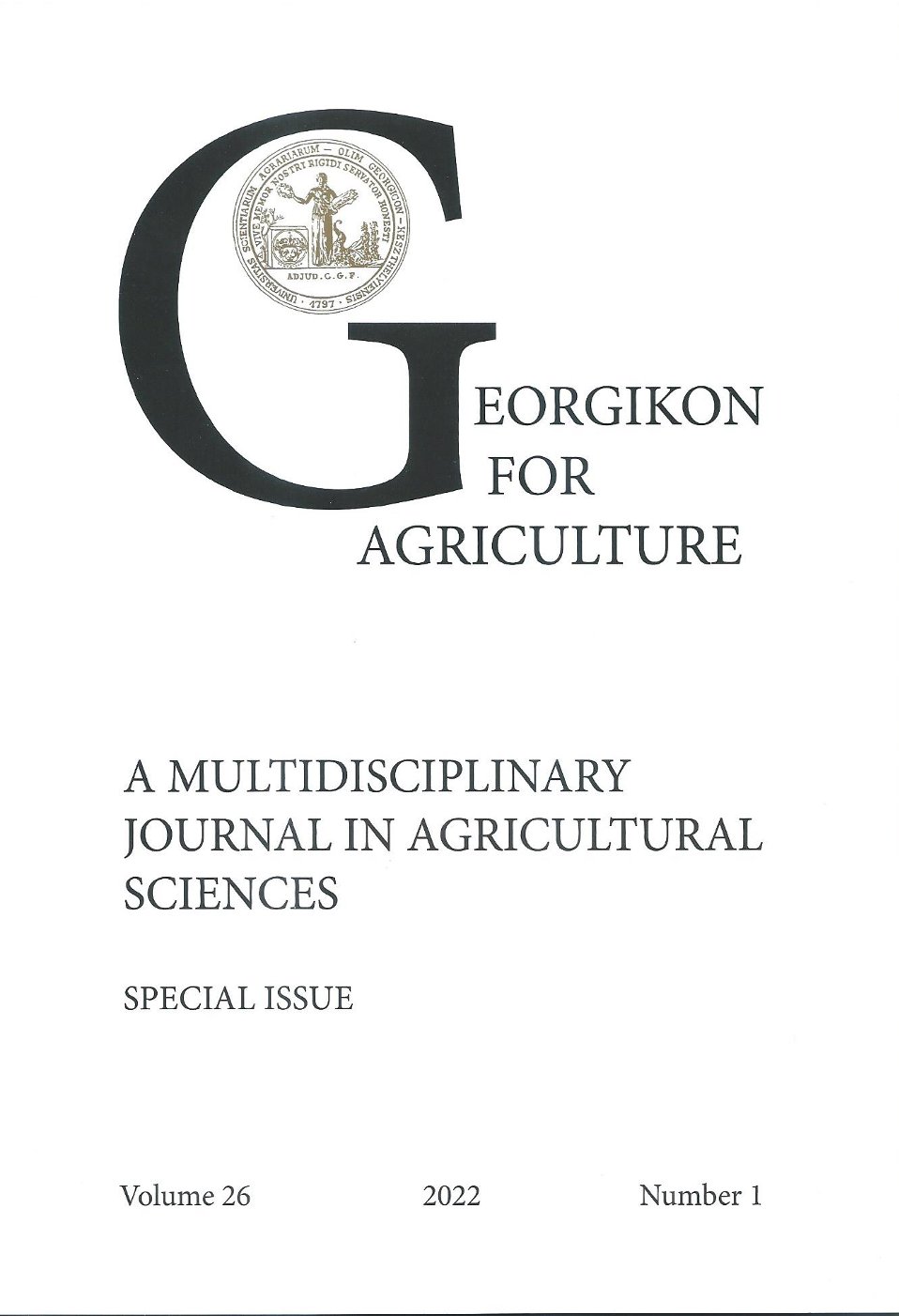Cseresznyelégy elleni védekezés törzsinjektálással
Keywords:
cherry, cherry fruit fly, Rhagoletis cerasi, trunk injection, acetamiprid-residueAbstract
The European cherry fruit fly (Rhagoletis cerasi) can cause up to 100% damage in Hungary and in some other countries. This fly makes the crop completely unusable for export and fresh consumption. Smaller trees can be successfully protected by spraying in the intensive cultivation. But spraying is often applied in unnecessary amounts, what pollutes the environment and most of the spraying does not reach the target pests. Injection affects only tree organisms, environmentally friendly, and we can use low doses of the active ingredient to kill pests. Trunk injection technique is not as widely used in Hungary as spraying. There are a lot of researches in the world based on injecting techniques of fruit trees. In our work, we select and formulate pesticides into injectable formulations, evaluate the experiment from an entomological view, and then measure the active ingredient residue in the fruit, leaves and flower by using the QuEChERS method. In this study we investigated the effect of the trunk injection. When trees were treated with 0.8 g active acetamiprid ingredient, we reached 100% protection against the cherry fruit fly. The insecticidal effect was also lower with lower dose treatments (88%, 94%). Acetamiprid ingredient residue in the cherry crop were ranged from 19.6 ng / g to 57.8 ng / g, depending on the treatment dose.
References
Andika, I. P., Vandervoort, C., Wise, J. C. and Rodriguez-Saona, C. 2020. Curative Activity of Insecticides Used to Control Spotted-Wing Drosophila (Diptera: Drosophilidae) in Tart Cherry Productions. Journal of Economic Entomology. https://doi.org/10.1093/jee/toaa161
Boller, E. 1972. Zum Verkauf und Einsatz neuer Kirschenfliegenfallen im Jahre 1972. Schweiz. Z. Obst-und Weinbau. 108. 84-87.
Costonis, A. C. 1981. Tree Injection: Perspective macro-injection/micro-injection. Journal of Arboriculture. 7(10). 275-277.
Doccola, J. J., D. R. Smitley, T. W. Davis, J. J., Aiken and P. M. Wild 2011. Tree wound responses following systemic injection treatments in Green ash (Fraxinus pennsylvanica Marsh) as determined by destructive autopsy. Arboriculture & Urban Forestry. 37(1). 6-12.
European Pesticides Database 2021. https://ec.europa.eu/food/plants/pesticides/eu-pesticidesdatabase_en.
Fernández-Escobar, R., D. Barranco, M. Benlloch and J. J. Alegria 1994. Control of Phytophthora root rot of avocado using prepared injection capsules of potassium phosphite. Adv. Hortic. Sci. 8. 157-158.
Fernández-Escobar, R., F. J. Gallego, M. Benlloch, J. Membrillo, J. Infante and A. Perez de Algaba 1999. Treatment of oak decline using pressurized injection capsules of antifungal materials. Eur. J. For. Pathol. 29. 29-38.
Filer, T. H. Jr. 1973. Pressure apparatus for injecting chemicals into trees. Plant Dis. Report. 57. 338-340.
Fimiani, P. 1983. Multilarval infestations by Rhagoletis cerasi L. (Diptera: Trypetidae) in cherry fruits. In Fruit Flies of Economic Importance, Cavalloro, R., Ed.; Balkema: Rotterdam, The Netherlands. 52-59.
Gutermuth Á. 2017. A fainjektálásban rejlő lehetőségek, esélyek és veszélyek, A Magyar Növényvédelmi Társaság Növényvédelmi Klub 379. előadása.
Helburg, L. B., M. E. Schomaker and R. A. Morrow 1973. A new trunk injection technique for systemic chemicals, Plant Dis. Report. 57. 513-514.
Központi Statisztikai Hivatal 2020. A fontosabb gyümölcsfélék termesztése és felhasználása. https://www.ksh.hu/stadat_files/mez/hu/mez0025.html
McClure, M. S. 1992. Effects of implanted and injected pesticides and fertilizers on the survival of Adelges tsugae (Homoptera: Adelgidae) and on the growth of Tsuga canadensis. J. Econ. Entomol. 85(2). 468-472.
Pimentel, D. 1995. Amounts of pesticides reaching target pests. Environmental impacts and ethics. 8(1). 17-29. https://doi.org/10.1007/BF02286399
Roach, W. A. 1939. Plant injection is a physiological method. Ann. Botany. 3. 155-226.
Downloads
Published
Issue
Section
License
Copyright (c) 2022 Rita Gyuris, Csilla Sörös, Ádám Gutermuth, Árpád Szabó

This work is licensed under a Creative Commons Attribution-NonCommercial-NoDerivatives 4.0 International License.
Cikkre a Creative Commons 4.0 standard licenc alábbi típusa vonatkozik: CC-BY-NC-ND-4.0. Ennek értelmében a mű szabadon másolható, terjeszthető, bemutatható és előadható, azonban nem használható fel kereskedelmi célokra (NC), továbbá nem módosítható és nem készíthető belőle átdolgozás, származékos mű (ND). A licenc alapján a szerző vagy a jogosult által meghatározott módon fel kell tüntetni a szerző nevét és a szerzői mű címét (BY).




